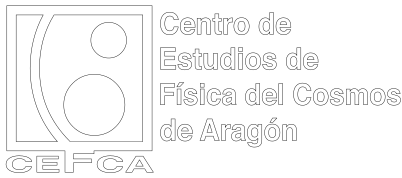CEFCA shares new technique with the world's great telescopes in Baltimore

Carlos Lopez's intervention in the Accurate Flux Calibration in the Era of Space Astronomy and All-Sky Surveys
Telescopes from Teruel have shared the limelight these days with the Hubble and the JWST telescopes, world references in space observation. The centre that leads the scientific missions of these telescopes has held a meeting in Baltimore where the contribution of the researcher Carlos López from the Centro de Estudios de Física del Cosmos de Aragón (CEFCA), among others, stands out. This scientist is one of those responsible for the J-PAS project being developed at the Javalambre Astrophysical Observatory (OAJ), the challenge of which is to produce a large three-dimensional map of the sky.
Carlos López has presented in Baltimore a new calibration technique that saves observing time but allows to reach an accuracy as high as the standard procedures applied in other observatories. Calibration is a fundamental, daily operation that guarantees the scientific quality of the observations made every night. The new calibration system developed by the CEFCA team is special because it uses its own data to perform the calibration and optimises resources. This could mean, in the short term, that the data from the JAST80 and JST250 telescopes of the OAJ could be used as a reference by other scientific centres in the world to carry out their own calibration. The meeting thus highlighted not only the scientific projects but also the technical advances that precede and support these results.
The Accurate Flux Calibration in the Era of Space Astronomy and All-Sky Surveys is a global event that, because of the pandemic, has not been held for a decade. From 22 to 25 October, the Space Telescope Institute (STScI) brought together more than 150 researchers from the world's leading space and ground-based observatories, from Chile to Hawaii, along with universities such as Harvard, Duke and Florida. For four days they discussed the state of the art and new developments in the main techniques in the field of telescope calibration. This is one of the most complex and at the same time essential aspects to guarantee the scientific use of the data obtained from the stars and galaxies observed.
CEFCA researcher Carlos López spoke on Wednesday 23rd and explained the practical case of the Pico del Buitre observatory. The calibration technique developed here combines data from the Gaia space telescope of the European Space Agency (ESA) and data from about a hundred white dwarf stars. These stars are the best astronomical objects to calibrate and have been observed from Javalambre with the JAST80 telescope as part of the JPLUS project. The technique saves a lot of observing time and has an error margin of only 1%, similar to the most advanced calibration methods.
The congress has also been an opportunity to share with the international scientific community the J-PAS and J-PLUS projects and the work being carried out at CEFCA and the OAJ. The Javalambre Astrophysical Observatory houses two of the most powerful telescopes in the world for mapping the Universe. Both JAST80 and JST250 integrate a common project: that of building large maps of thousands of square degrees of the sky as seen from Javalambre. In particular, JST250 aims to locate the precise position of millions of galaxies and create one of the most complete 3D maps of the Cosmos
.Other references have been the Hubble space telescope and its successor JWST. The former has been orbiting since 1990 at 593 kilometres above sea level and demonstrated the advantage of avoiding atmospheric turbulence, weather and even light pollution. Webb, meanwhile, is supported by 14 countries and was launched by NASA in 2021 to observe, among other things, the first galaxies in the Universe. It will be followed by the Nancy Grace Roman Telescope, scheduled for launch in 2027. The different techniques for calibrating these and other ground-based telescopes have been reviewed these days in Baltimore.

